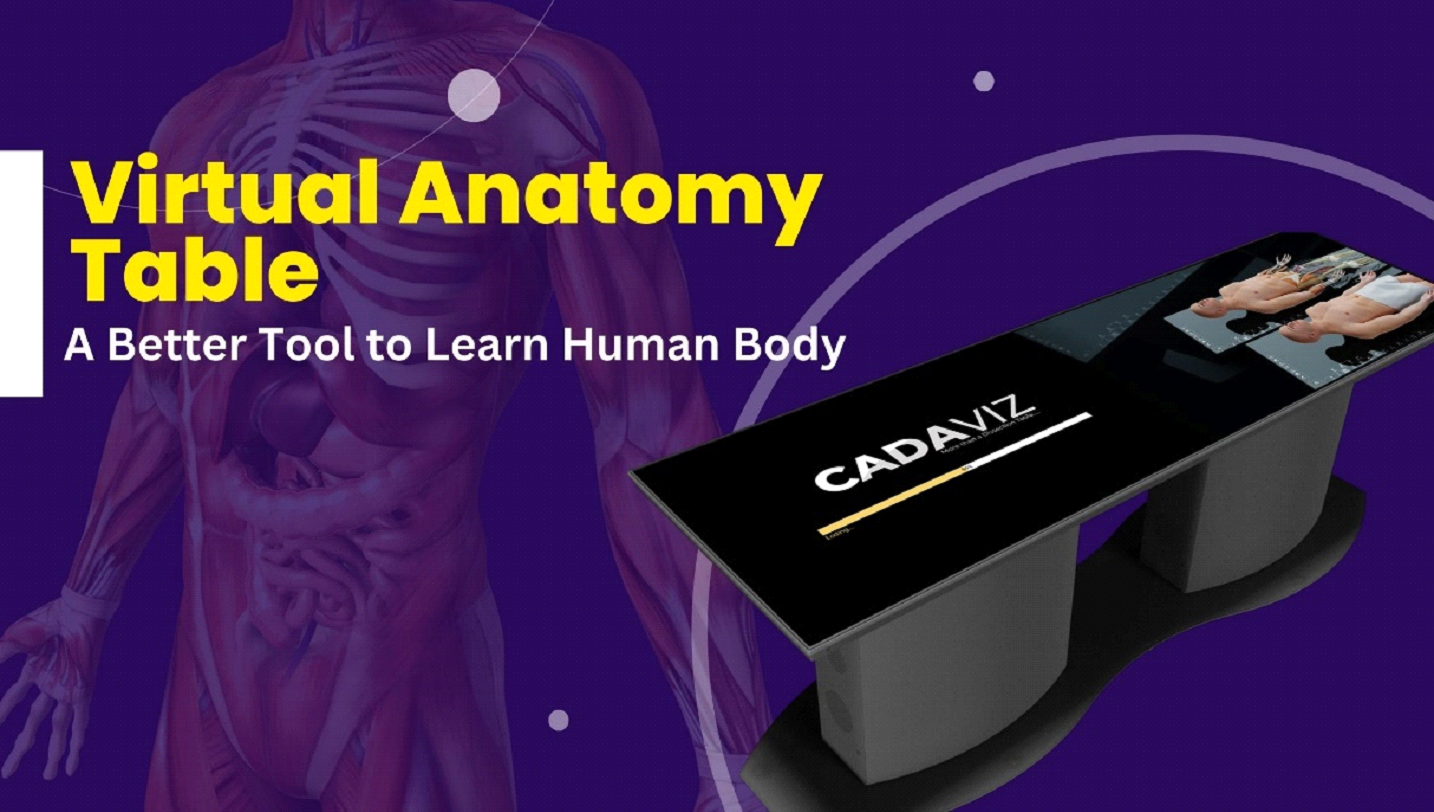Imagine entering a world in which cadaver labs and dusty textbooks are not the only places where the human body is studied. Visualize travelling through the complex network of bones, organs, and systems while maintaining an ethical and environmentally cautious mindset. The Virtual Anatomy Table emerges as a bright spotlight of innovation and enlightenment in the future of anatomical instruction.
Now, it is possible to enter the human body, explore its intricate design in breathtaking three-dimensional models, and do a dissection without even picking up a scalpel. Get ready for the unique Virtual Anatomy Table, where pixels turn into organs, clicks turn into dissections, and learning expands beyond your imagination.
Challenges in Traditional Anatomy Learning
Traditionally, cadaver dissections, textbooks, and two-dimensional graphics have been used to teach complex subjects like anatomy. Although these techniques have long been accepted as standard, both students and teachers face several difficulties as a result.
- Limited Access and Limited Exposure
One significant obstacle that stands in the way of traditional human anatomy study is- the limited availability of cadavers, which results in insufficient experience for interested students. Imagine yourself as a medical enthusiast who is eager to learn more about the complex human anatomy, only to find oneself in a classroom where cadavers are as rare as valuable stones. It’s like attempting to open a treasure chest’s lid with only a glance through the keyhole.

Due to the lack of hands-on learning opportunities, students also crave a closer relationship with the subject they are most interested in.
- Passive and Ineffective Learning For many years, static graphics and lectures have been the primary components of traditional human anatomy education. These techniques have surely given students useful knowledge, but they also create specific obstacles. Imagine yourself in a darkly lit lecture hall, absorbing information from the static images on the screen while the hum of the projector fills the room. It’s similar to attempting to capture the life of an exciting town from a single postcard.

Students often yearn for a more dynamic and immersive approach because these two-dimensional representations frequently fall short in communicating the complex structure of our three-dimensional bodily structures.
- Inconsistent Supply and Maintenance of Cadavers
Securing a steady supply of cadavers and guaranteeing their precise maintenance is a difficult task in traditional human anatomy study. Teachers must walk a fine line between pedagogy and profound respect for the donors who dedicated their remains to science since the logistics, ethics, and emotional challenges of conserving this important resource often take over the actual teaching.

As educators and institutions adopt cutting-edge tools and platforms, traditional anatomy learning, which is represented by cadaver dissections and static textbooks, is experiencing a fundamental change. At the centre of this evolutionary change is Virtual Anatomy Tables, revolutionizing medical professionals and students to explore and comprehend the complex details of human anatomy.
Anatomical Learning in the Digital Era
- Digital Renaissance in Medical Education
By implementing interactive 3D models and animations, the digital renaissance in medical education has completely transformed anatomy instruction. Digital platforms like Virtual Anatomy Table have models that give students an unmatched level of depth and precision, enabling them to explore challenging ideas.
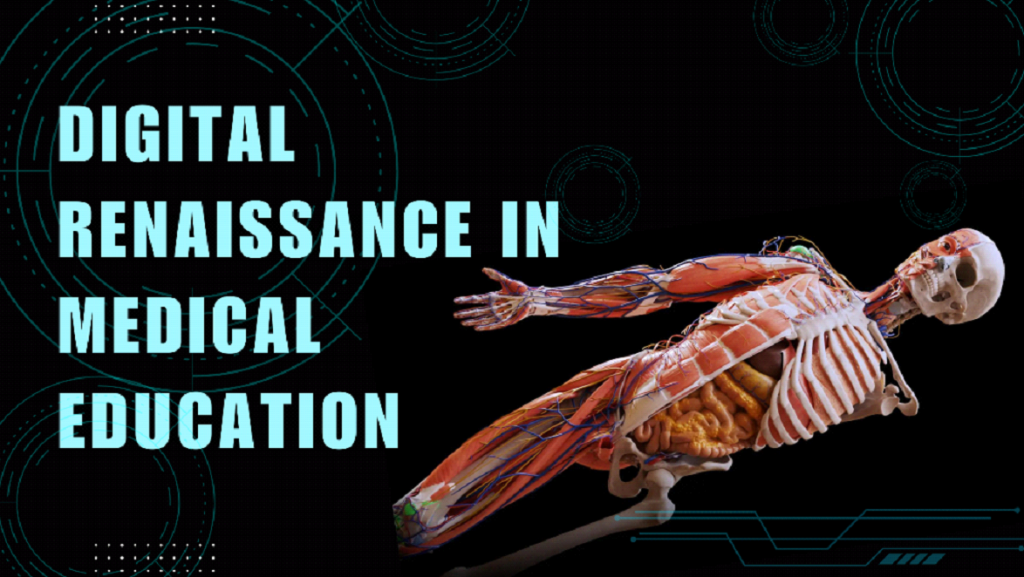
These Virtual Anatomy Tables make anatomy education open to part-time students, distant residents, and distance learners. The learning process is also improved by real-time evaluation tools present in the Virtual Anatomy table, which promote a more flexible and individualized learning environment.
- Elevating Anatomy Education with Virtual Anatomy Tables
A revolutionary device for modern anatomical education, Virtual Anatomy Tables provide a thorough analysis of human anatomy as well as improved visualization and interactivity.
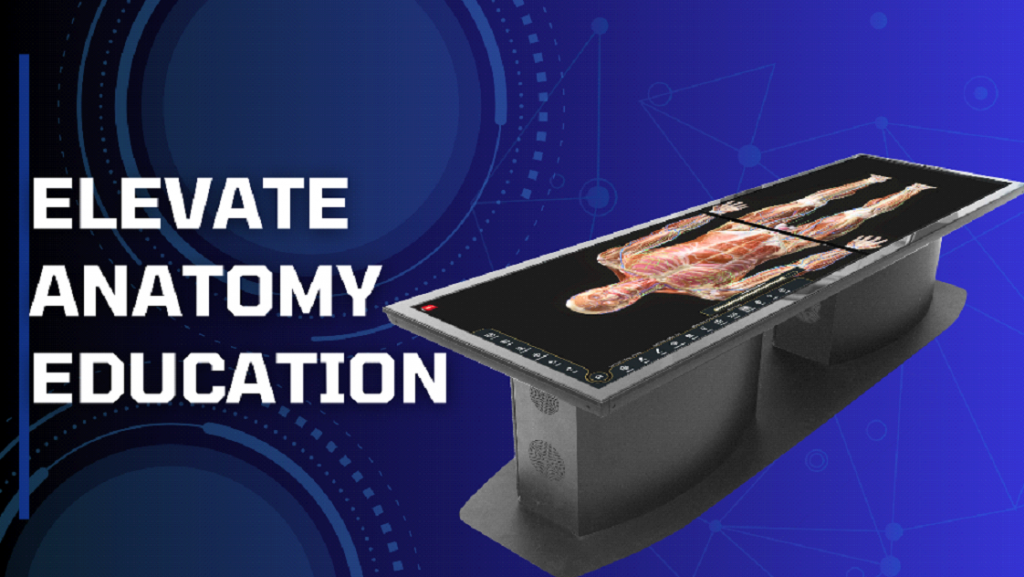
These tables give students an in-depth look at the human body and allow them to explore delicate anatomical connections. These interactive tables encourage students to learn more about the topic at hand, which improves memory and comprehension.
- Increasing Momentum in Higher Education Institutes
Virtual Anatomy Tables are being used more frequently in medical schools to improve student learning. These cutting-edge learning resources boost comprehension and memory of anatomical information.

Virtual Anatomy Tables also provide ethical as well as practical solutions, reducing the cost of cadaver preservation. Additionally, Virtual Anatomy Tables give students the abilities they need for modern medicine and prepare them for the challenges of modern medicine.
Anatomy At Your Fingertips: CADAVIZ
Navigating the Wonders of Virtual Anatomy Tables
Virtual Anatomy Tables have emerged as the light of innovation in the constantly changing world of medical education, revolutionizing how students and professionals engage with the vast and complex world of human anatomy.
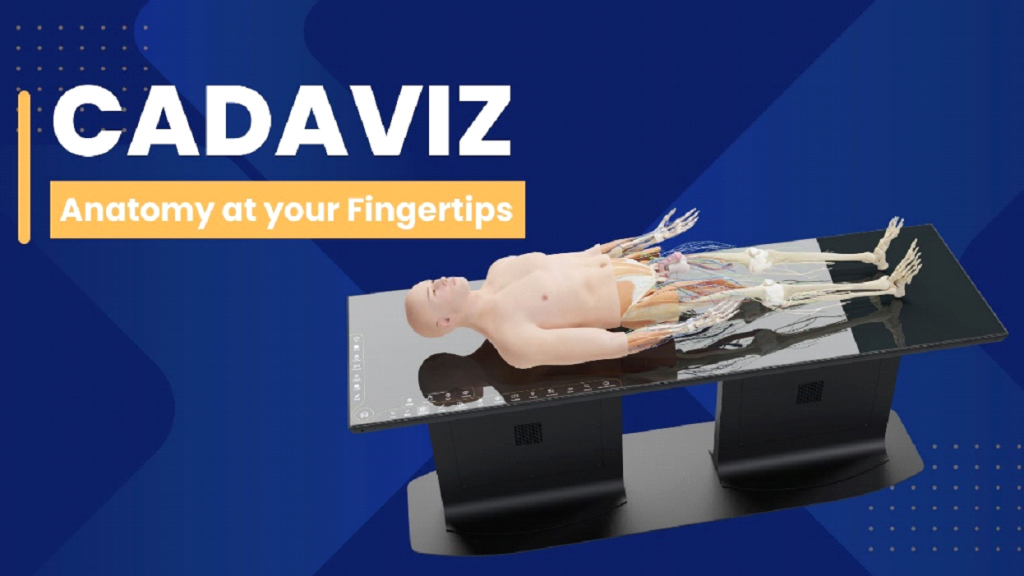
One such example of a Virtual Anatomy Table is Cadaviz. Cadaviz has cutting-edge tools that make learning anatomy realistic and immersive in ways that conventional teaching methods could only hope to achieve. Let’s go out on a trip to comprehend Virtual Anatomy Table’s operation and what makes it such a powerful force for change in anatomical education.
- Use of 3D Models and Interactive Animations
CADAVIZ, a Virtual Anatomy Table, simulates dissecting and exploring the human body. To offer an interesting and dynamic learning experience, it includes 3D models and interactive animations.
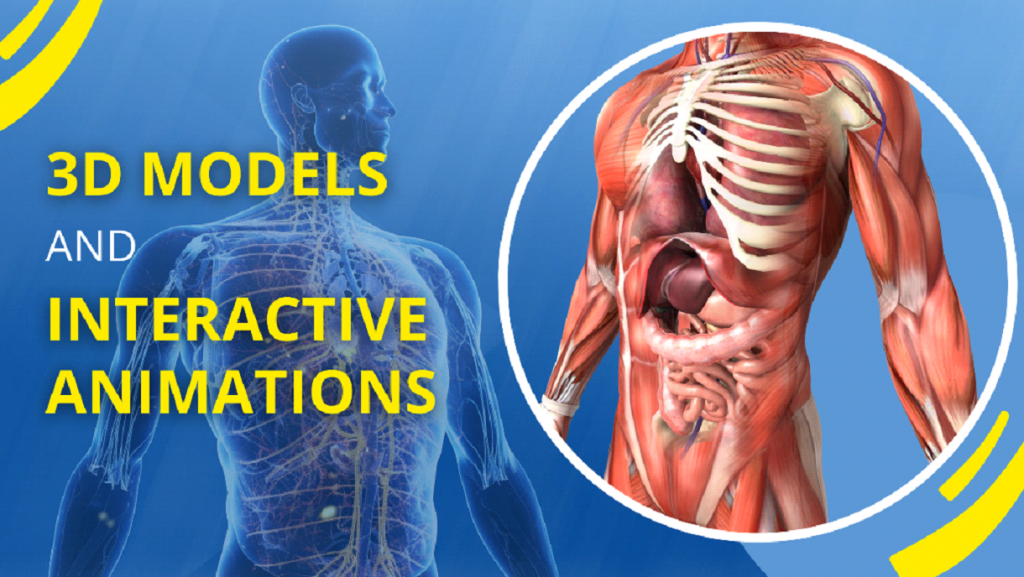
Users can view physiological processes in real-time only due to these models, which have been carefully developed to assure accuracy. Navigation is made simple by the user-friendly interface, which also includes zoom, pan, and rotate. This encourages a thorough understanding of anatomy.
- Simplified Handling – Making Anatomy Exploration Effortless
A user-friendly user interface makes navigating a virtual anatomy table simple and easy. The following are the tools for easy user interaction-
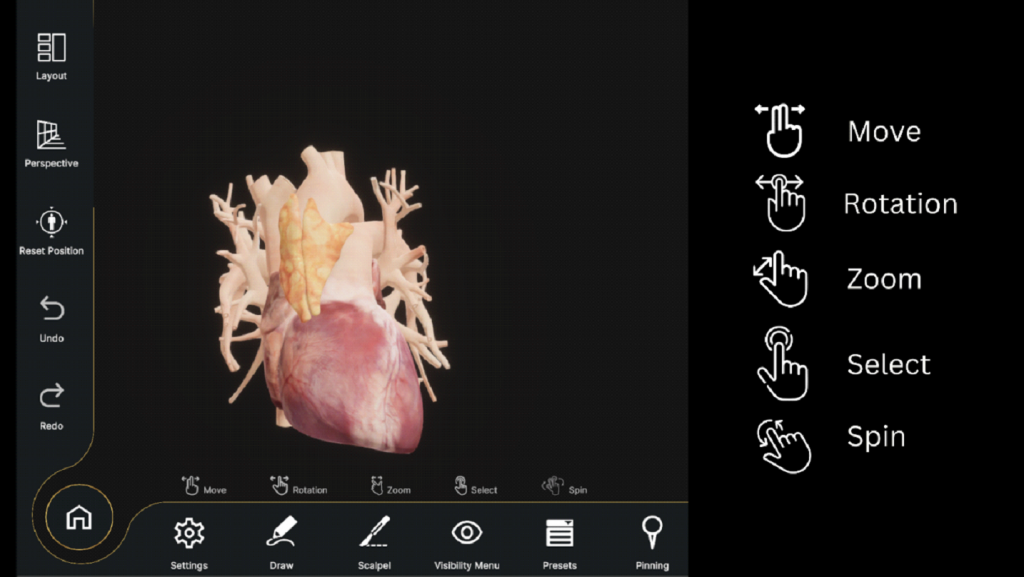
Zoom: Users can use the zoom feature to focus on particular structures or to investigate entire anatomical systems. They can zoom in for a close-up view.
Pan: Users may move easily around the virtual space with the ability to pan over anatomical models, making sure that no detail is missed.
Rotate: A 360-degree perspective is provided by rotating models in any direction, allowing users to comprehend the spatial relationships between structures from all sides.
Select and Screenshot : Virtual Anatomy Tables, such as Cadaviz, frequently let users select and screenshot particular structures, which makes it simpler to recognize, comprehend, and remember skeletal elements.
Comprehensive View of the Entire Human Body
- Covers from head to toe
CADAVIZ offers an in-depth view of the entire human body, from head to toe. Users can explore the complete body with remarkable accuracy because every bone, muscle, neuron, organ, and blood vessel is precisely rendered in three-dimensional details.
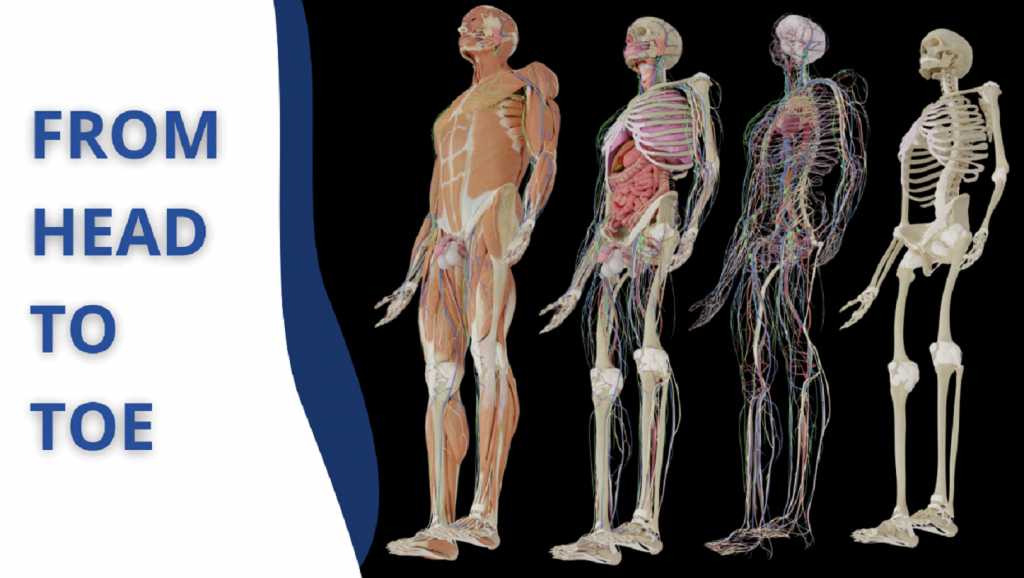
- Rotating Perspective
The ability to spin anatomical models in any orientation is another impressive feature of CADAVIZ. For instance, turning a virtual heart model can show how various chambers and valves collaborate to coordinate the complex process of blood circulation.
- Depth of Understanding- Comparison between Traditional Methods and Virtual Anatomy Tables

Real-World Application Through Clinical Cases

CADAVIZ presents students with the patient’s case study, which is both diverse and representative of conditions they will encounter in actual medical practices. They include complex medical conditions with their clinical significance, pathophysiology and management and treatment.
Interactive Quizzes
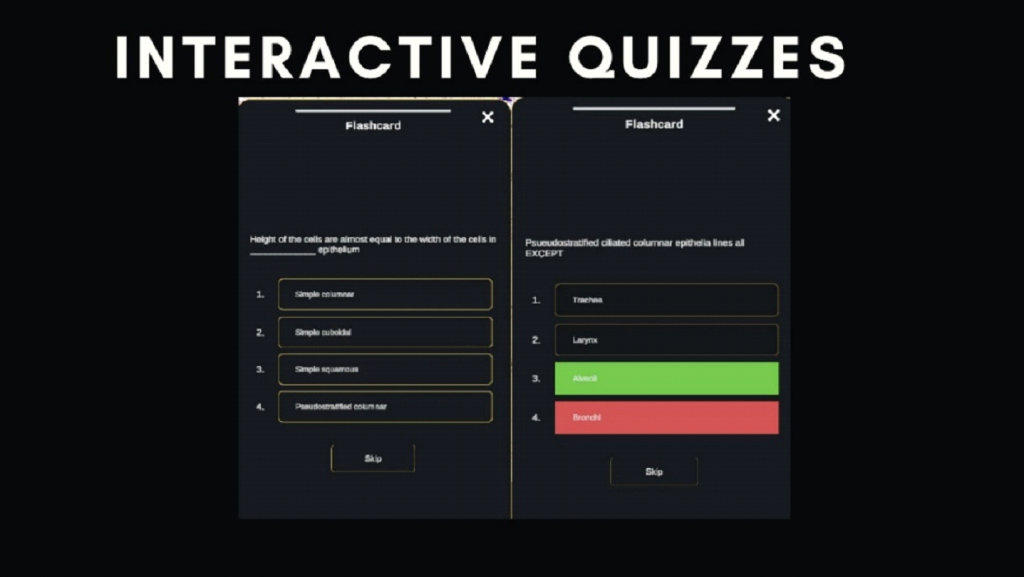
CADAVIZ uses interactive tests and assessments to promote critical thinking promote active participation, and ultimately improve learning outcomes. These tests are thoughtfully included at various points during the anatomical study, turning learning into a fun game. To allow students to think critically about the structures they have studied, they are given questions that test their understanding.
Future of Anatomy Education
Virtual Anatomy Tables are emerging as an essential component in the future of anatomy education, which is set for a transformative period. Virtual Anatomy Tables will advance as the field of medical education develops, overcoming educational gaps and promoting interdisciplinary integration between many fields. Virtual Anatomy Tables will incorporate cutting-edge imaging methods like MRI and CT, giving students access to real patient data and a deeper understanding of anatomical variations and disorders. While AI-driven features will provide wise guidance, haptic feedback will enhance the immersive learning experience. There will be personalized learning routes available, enabling students to concentrate on difficult subjects or research complex ones.
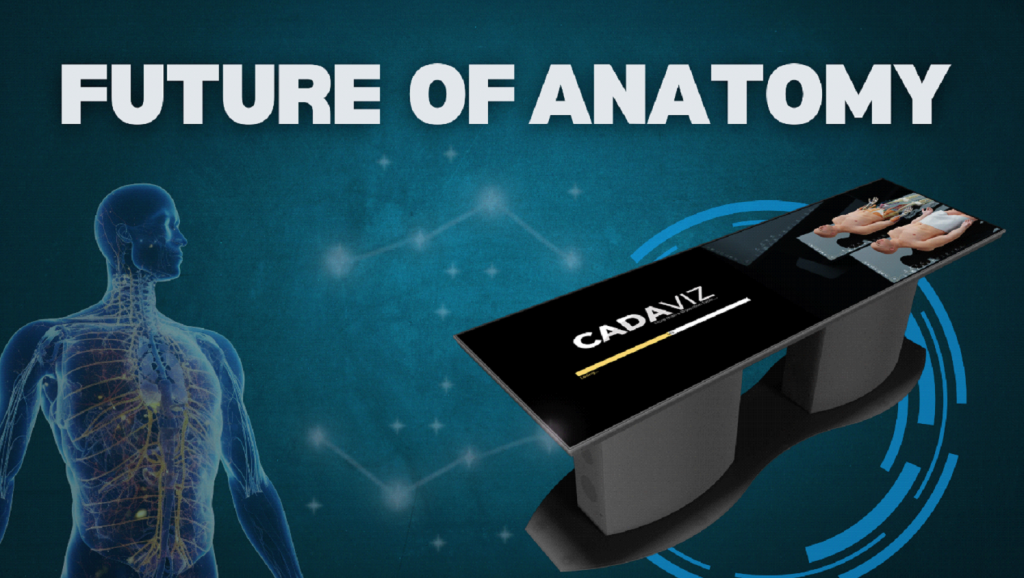
Virtual mentors will be available continuously to offer support. Healthcare practitioners with skill, confidence, and a thorough understanding of human anatomy are what the future of anatomy education promises.
Conclusion
Through the use of interactive quizzes, dynamic simulations, and immersive 3D models, Virtual Anatomy Tables (VATs) are changing anatomical education. The human body is thoroughly explored using these digital technologies, which also provide improved visualization, interactive learning, practical applications, and ethical accessibility.
With products like CADAVIZ’s virtual anatomy tables, which cover the whole human body, students can learn about every anatomical feature. Additionally, they provide gamified exams and quizzes that promote participation and critical thinking. VATs are an essential resource for students and teachers in anatomical teaching because they overcome ethical issues associated with the use of cadavers.
In the ever-evolving landscape of medical education, one truth remains constant: the human body is a masterpiece of complexity, waiting to be unravelled. With Virtual Anatomy Tables, we hold the key to unlock its mysteries like never before.
Writer – Sheetal Ankam
Subject Matter Expert(Biology)

